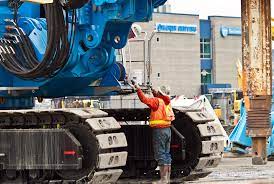5 Tips for Automotive Deep Hole Drilling Processes

Last Updated on August 31, 2023 by
For any kind of deep hole drilling application, whether automotive or other purpose, the work specifications demand specialized equipment capable of not just creating the drill cavity but also doing it in a manner that is consistent, straight, and accurate. That’s a tall demand. As anyone knows who has tried to drill into hard material or metals, a lot can go wrong with just basic equipment. Managing specialized equipment for extensive drilling on a repeat and automated basis requires both expertise in application, as well as equipment designed for the challenges that are unique to this kind of work.
Lubrication is Critical
Any kind of consistent, long-term drilling into a hard material is going to create friction and heat. That, in turn, is going to cause a drill head to expand due to the physics of molecular change. When that change occurs, the drill head and drill arm can get stuck inside the material until it cools again. Damage can also occur, including broken equipment, damaged target material or inaccurate work. All three end up creating costly waste. To avoid this problem, lubrication is a must. However, while metal grinding lubrication, which both cools the drill head as well as protects it, can be easily added to a short-length drill task, it’s much harder to apply inside a deep-length hole. The solution is an internal lubrication delivery system that pushes the lubricate through a channel in the drill head. This provides the lubrication directly to the contact point as well as flushes out debris created by the drilling.
Precision and Accuracy Ensurance
Running a drill head an inch or two into a target material is not going to create a lot of heartburn, even if it needs to be done one thousand times daily. However, running it two feet or more than 30 inches deep is another matter entirely. Much of the problem comes with the length and runout control. Not managed accurately, the drill rod can wobble. It requires greater and greater power as well as stability to keep the drilling on a straight line. Further, the diameter of the cavity needs to remain accurate. Variations can create friction points or areas where things clog. Again, specialized equipment and monitoring are essential to make sure things run smoothly in these circumstances. No surprise, dedicated deep hole drilling systems manage these demands with computer-managed controls, ensuring the drill length and cavity stay on track and can be repeated exactly with each application in a batch.
Advancing Technology Challenges
Where previously a good amount of design and features that required extensive machining was reserved for high-performance vehicles for racing or ultra-high-end customers, today many of those same designs are also being incorporated into standard consumer cars and trucks. Vehicle manufacturers have found ways to integrate their higher power performance or efficiencies into standard engines that are designed to do more with lighter systems and less consumption. All of that specialized design has increased the demand for deep hole drilling, particularly into engine component parts as well as transmission and fluid delivery systems. Deep hole drilling services have had to match the demand with higher batch output, greater accuracy and tolerances, and increase accuracy for high performance parts to work together correctly. That in turn has driven the need for far more computer-aided drilling machines or CNC systems as well. Any manufacturer or drilling provider not staying up to par with the technology demands is going to find themselves pushed out of the market due to an inability to meet the higher criteria and specifications of new orders.
Far More Integrated Engineering
To reduce weight and delivery more from vehicle assemblies, car parts are being expected to provide multiple benefits versus just a singular purpose. So, for example, an engine casing previously just protected the engine and kept the combustion system contained to harness energy pressure from the ignition process. Today, the same engine case provides fluid delivery, hot gas exit, rod and part rotational harnessing, containment and more. All of those features happen by how to the engine casing is fabricated, including deep hole drilling that replaces the need for hoses and conduits on the outside. No surprise, large scale drilling services are expected to adapt and match to meet demand.
High Durability Tool Life Matters
With batch runs of hundreds or thousands of parts per order, tool durability has become a hot priority. Drill heads wear down and go dull, reducing or eliminating their effectiveness. Drill life can be extended significantly by matching the right tooling to the job, and that only comes with operator expertise and experience. Artisan know-how can extract the maximum life span out of tooling, which can result in thousands of dollars saved in operations by not having to replace tooling prematurely. Additionally, high-capacity tooling adds to lifespans as well, being able to take on much more inventory and work before dulling out. Both combined are critical metrics to stay on top of to maximize value from capital invested in drill production runs.



